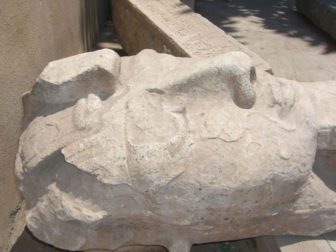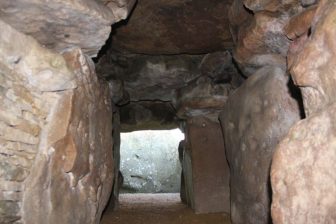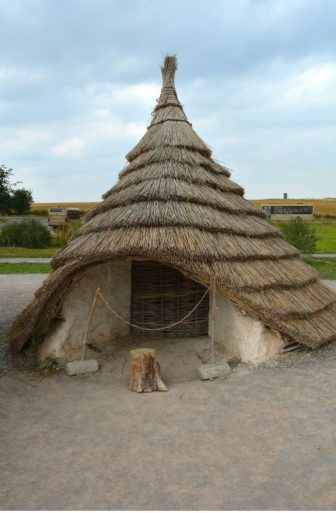MATARIYA, Egypt – Just outside the modern city of Cairo, lies buried the ruins of the ancient city of Heliopolis. On that site, the pharaonic Egyptian creation myth played-out. The sun first rose there. Atum and Ra first appeared there.
The Greeks called it Heliopolis. The ancient Egyptians called it I͗wnw (the pillars) or Iunu. It became one of the most sacred sites in pharaonic Egypt. The Egyptians began building Heliopolis in roughly 2500 B.C.E., about the same time as they were building the Pyramids. Originally, it functioned as the cult center of Atum. As Egyptian religion evolved, Atum became linked with Ra and Horus. Contemporary Egyptians refer to the site as Matariya, a suburb that Cairo is absorbing.
Heliopolis had major importance in pharaonic Egypt, but things change. In late antiquity, it became source of limestone for Cairo. Its obelisks were looted by conquerors. Rome has four. Florence, London, and New York have one each. Only one of its obelisks still remains on-site, that of a 68-foot-tall red granite monument around 1950 B.C.E. erected by Senwosret I.
Around 1500 B.C.E., the rulers of Heliopolis leveled parts of its necropolis to create the “High Sand.” In their mythology, the High Sand marked the spot where creation first occurred.
This Temple of the Sun itself covered 31 acres. Heliopolis had other temples to Horus, Hathor, Mut, and Amun. The Temple of the Sun, however, formed the epicenter of the town.
The henotheist Pharaoh, Akhenaten (ruled 1349–1336 B.C.E), closed many Egyptian temples when he attempted to limit worship to only one of the Egyptian gods, Aten. According to Dietrich Raue of The Heliopolis Project, even during Akhenaten’s “cultural revolution,” new temples were built in Heliopolis. Raue said that “The Temple of the Sun had an uninterrupted cult for at least 2,400 years. The continuity is amazing. Heliopolis wasn’t like anywhere else in Egypt.”
During the Hellenistic period (323 to 31 B.C.E), the Temple of the Sun housed the archives of pharaonic Egypt, but it gradually fell into decline. During the reign of Emperor Augustus (27 B.C.E to 14 C.E), the Greco-Roman geographer, Strabo found the site deserted. In March of 1800, Napoleon fought a battle on site of Heliopolis.

Neithsabes [Public domain]
Head of Ramesses II; credit Neithsabes
Before 2011’s Arab Spring, the Egyptian authorities controlled this site. Those authorities prevented development. Amidst the chaos of the Arab Spring developers moved-in. The site of the Temple of the Sun became a trash dump. In 2012, the Heliopolis Project began an archaeological rescue operation. They are racing to rescue what they can before the developers “develop.”
The trash dump left over from 2011 rises 20 to 42 feet above ground level. Below that trash lies six to 20 feet of soil and debris. Below that lie the archaeological remains. Frequently, they are at eight feet below the water table.
After the Roman period, the builders of Cairo looked at Heliopolis largely as a quarry. They took the limestone but, fortunately, left the sculptures. The Heliopolis Project has found a 15-foot granite falcon, a stone claw from a Sphinx, a life-size depiction of Ramesses II, and an eight-ton fragment of a sculpture of Pharaoh Psamtik I.
The Heliopolis Project is not only excavating the temples. They are also finding that Heliopolis housed the priests and support staff in high-rise mudbrick tenements. Evidence suggests a population density not unlike that of today’s Manhattan.
* * *
SALISBURY, U.K. – Archaeologists have reported evidence of large, seasonal, ceremonial feasts at four sites near Stonehenge. Three, Durrington Walls, Marden Henge, and West Kennet Long Barrow are located in the Stonehenge and Avebury World Heritage Site. The fourth, the Mount Pleasant Henge, is located in Dorset. Mount Pleasant is roughly 43 miles (69 km) from Durrington Walls.

HeritageDaily
West Kennet Long Barrow: credit HeritageDaily
These feasts occurred from about 2800 to 2400 B.C.E., roughly at the same time as the building of Stonehenge. At present, no one knows exactly what happened at these feasts besides eating and social interaction. Very likely, it was something that modern Pagans would recognize as ritualistic. While it would have had great meaning for the people involved, its meaning is lost to moderns.
The human remains found at the sites of these feasts were cremated. This cremation prevented analyzing the human remains to determine if they were local or came from somewhere else.

TobyEditor
A reconstruction of one of the Neolithic houses discovered at Durrington Walls, near Stonehenge Photo credit: TobyEditor
Pigs provided the main course at these feasts. Archaeologists theorized that analyzing the remains of these pigs could be a defensible proxy for analyzing human remains. Isotope analysis revealed that these pigs were not local. They came from Wales, Scotland, and northeastern England.
The distance from the Stonehenge and Avebury World Heritage Site to the northeastern part of the English-Scottish border is about 263 miles (423 km). It would take about 6 hours to drive that distance today.
The average person today has a walking speed of 3.1 miles (5 km) per hour. Assuming walking for eight hours per day in a straight line over a flat surface with no rivers to cross, this journey would require at least two-weeks. Britain, however, is not a flat even surface. It has hills, valleys, rivers, marshlands, and other ‘obstacles.”
The “walking” speed of pigs would have set the upper limit of speed. As pigs have shorter legs than humans do, the walking speed of pigs would have been slower than that of humans. Rather than a land route, people probably brought the pigs to these areas by ocean and/or river travel.
The building of Stonehenge required a culture with complex social organization. Human travel to ceremonial feasts across large distances shows that it would have had a large geographic reach. That culture also had to organize the transport of stones and livestock along rivers and oceans, indicating a fairly high level of maritime skills. These skills predate metal work and the invention of permanent large cities.
* * *
SALT LAKE CITY – The construction of prehistoric megalithic monuments may have begun in modern-day northwest France. Bettina Schulz Paulsson of the University of Utah reported using radiocarbon dating to analyze 2,410 megaliths in Europe. Her goal was to estimate where and when people began building megaliths. She found the earliest megaliths appeared around 4400 B.C.E. in what is now northwestern France.
Megaliths spread along the coasts of France, Spain, Portugal, and the Mediterranean over the next 200 to 300 years. Later, megalithic culture expanded into Britain, Ireland, and Scandinavia.
People began to build earthen grave monuments in this area around 5000 B.C.E. The first megalithic graves in northwestern France appeared between 4800 to 4000 B.C.E. A few centuries later, dolmens began to appear in northwest France. Passage Graves began to appear from 4000 to 3400 B.C.E. One of the later achievements of this megalithic culture was Stonehenge.
The Wild Hunt is not responsible for links to external content.
To join a conversation on this post:
Visit our The Wild Hunt subreddit! Point your favorite browser to https://www.reddit.com/r/The_Wild_Hunt_News/, then click “JOIN”. Make sure to click the bell, too, to be notified of new articles posted to our subreddit.